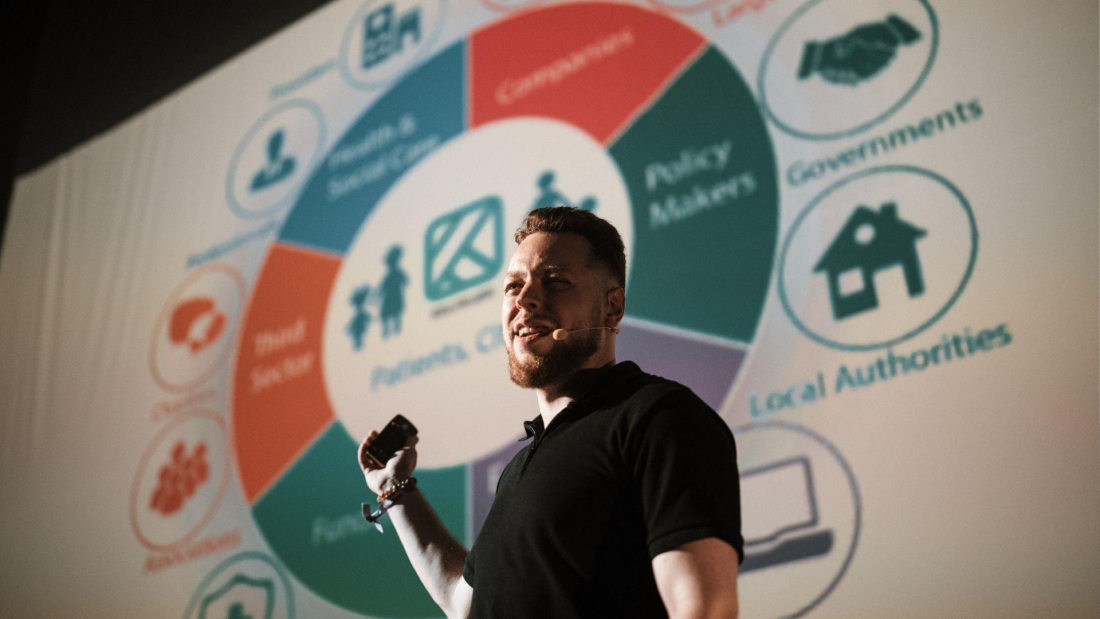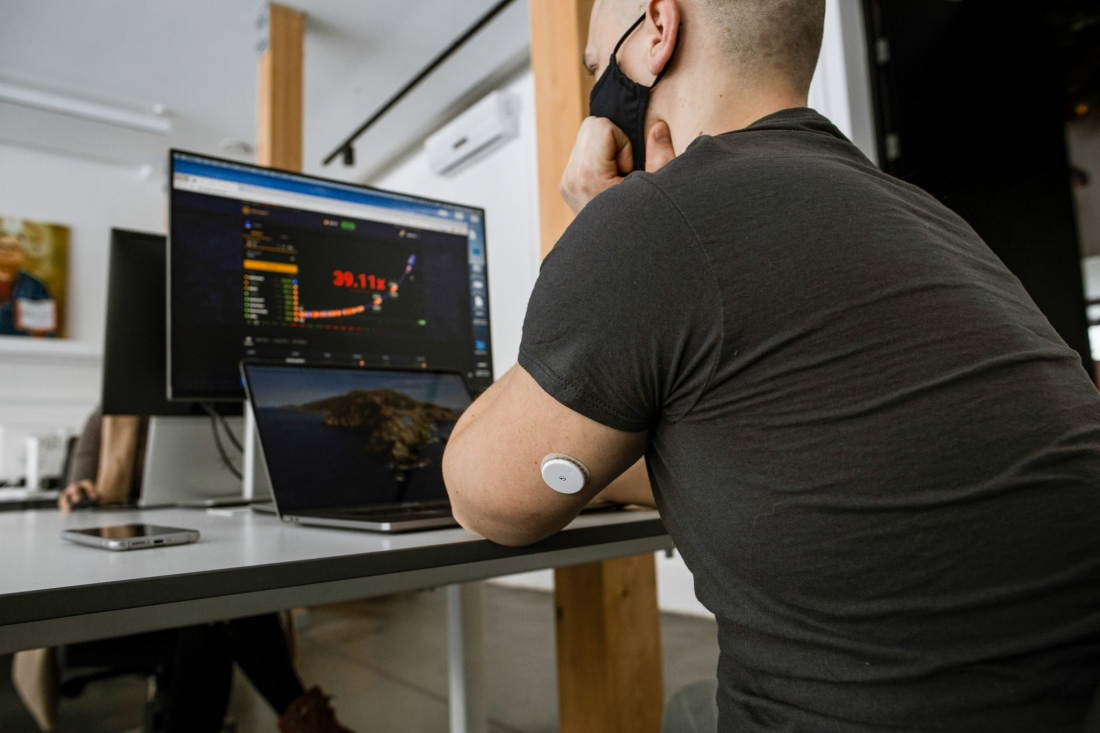What if an app could help you manage prediabetes or lower high blood pressure? Digital therapeutics (DTx) technology might be the right tool to address the most common health issues. So, what exactly is DTx, and how can it be used to help people live healthier lives, according to UAB Kilo Grupe?

What are digital therapeutics (DTx)?
Digital therapeutics (DTx) are software applications developed for people who have health issues or are at risk of developing them. DTx solutions can help people prevent, treat, and manage various health conditions.
According to Deloitte’s Future of Health vision, they “have the potential to accelerate the shift from healthcare to holistic health” – meaning that instead of looking only into physical health, we would start taking care of ourselves in a more general sense and include mental, social, or other aspects of health.
DTx apps are generally evidence-based medical interventions with a proven clinical value. Informed by certified health professionals, they rely on a scientific rigor not seen in general wellness apps.
They often use cognitive behavior therapy (CBT) methods to encourage healthy lifestyle changes. This makes them a powerful tool for preventing a variety of conditions.
They can influence the course of a condition through personalized advice, programs, and alerts. It marks an important development in the history of digital health.
The highlights of digital therapeutics history
DTx has roots that go back to 1966, with an early experiment from MIT Artificial Intelligence Laboratory researcher Joseph Weizenbaum, who used the artificial intelligence program ELIZA to simulate the connection a person might develop with a Rogerian psychotherapist.
Today, ELIZA would be considered a simple chatbot that asks open-ended questions and provides simple responses. But several decades ago, it was a unique creation that inspired many futurists and computer scientists to rethink the connection between technology, health, and human behavior.
The term “digital therapeutics” as we know it today was first used in 2012 with the first prescription DTx solution for diabetes. In 2015, the first DTx depression treatment received FDA authorization. DTx for substance disorders, schizophrenia, and bipolar disorder appeared in 2017.
Also, in 2017, the Digital Therapeutics Alliance was founded to advance the DTx field even further. UAB Kilo Grupe is a member of the organization, together with other industry pioneers seeking to encourage the adoption of digital therapeutics on a broader range.
Today, wearable monitoring devices and the rise of personalized health spearhead the advancement of DTx, especially after the transformation that the healthcare system had to endure due to the Covid-19 pandemic.

How can DTx be used?
DTx solutions target a broad range of medical conditions and users. Successful examples often focus on preventable or manageable chronic conditions that could be impacted by habit change.
Some examples of DTx models in action include:
- Cognitive behavior therapy (CBT) mobile apps. These apps help prevent or treat medical conditions through lifestyle changes. CBT interventions can be delivered using software only – with images, sounds, asynchronous communication with health coaches, habit-building exercises, and many more. Such mobile interventions succeed when they capture the user’s attention and use it to guide the user to make a healthy choice or build a healthy habit.
- Smart blood glucose monitoring and drug dose change for patients with diabetes. We have been able to measure glucose at home for a while now. What about changing the insulin dosage without a doctor’s appointment? This is possible thanks to DTx – mobile software changes your insulin dose based on your blood glucose readings.
- Smart remote disease monitoring. Asthma and COPD patients have the ability to track how their medication intake corresponds with certain interactions. A sensor is placed on the inhaler and records and plots inhaler usage trends on the phone. The user is warned beforehand about certain locations and their own actions that increase the usage of an inhaler. At the same time, doctors can quickly spot these changes and respond with treatment management.
How DTx improves the healthcare system
DTx solutions can play many roles in the healthcare system. They can complement a traditional treatment plan or provide standalone disease management and prevention options.
Many DTx solutions today help doctors, patients, and caregivers. They achieve this in several ways.
- Ease the burden of healthcare professionals by providing information about real-time insights into the key metrics of the patient’s health.
- Helps prevent disease and mitigate disease risk factors with cognitive behavior therapy and other strategies.
- Enables patients to keep track of their health data in real-time.
- Helps caregivers support their loved ones – for example, it helps them notice the rising levels of blood sugar and take action before it becomes dangerous.
- Ensures the current treatment strategies with notifications and alerts to take medicine.
In 2019, the German Parliament passed legislation allowing German doctors to prescribe DTx apps to insured patients. The value and benefits of DTx for the healthcare system are hard to ignore.
What about the potential issues?
As with all innovative technologies, DTx is not without potential issues. Let’s take a closer look at some of them.
Data privacy and security
Most DTx solutions need to log or monitor patient data to work effectively. What’s more, DTx apps store this data over the internet, often in the cloud. This data is essential for personalized plans such as meal recommendations.
But for this data to stay safe, security must be built into DTx solutions by design. Secure authentication and encryption are important. How users handle their data is also important.
Integration with healthcare systems
Another challenge is integration into existing healthcare systems. Systems with a more rigid structure may not be open to change. And even less after the COVID-19 pandemic, which has left them reeling.
Compounding this problem is physician adoption. Not all physicians are aware of the potential of DTx apps. However, this is likely to change as DTx apps become more widespread.
Toward better healthcare
Digital therapeutics are here to stay. They are simple and accessible solutions that help address some of healthcare’s biggest problems.
Most of a patient’s life happens outside of the doctor’s office, clinics, or hospitals. And it involves many small actions and decisions every day.
Take blood glucose monitoring and healthy meal plans. They can make all the difference between managing prediabetes and developing full-blown diabetes.
The number of people with diabetes will reach 643 million by 2030, according to predictions. In a world afflicted by an epidemic of diabetes, DTx can have a massive impact on countless lives.
Also important is the motivational factor, and DTx can help with that as well. A customizable exercising plan for beginners can help keep patients active.
In the end, DTx offers personalized healthcare in an accessible format. It has the potential to improve the lives of millions of people. And not only patients but doctors and other healthcare providers too.
